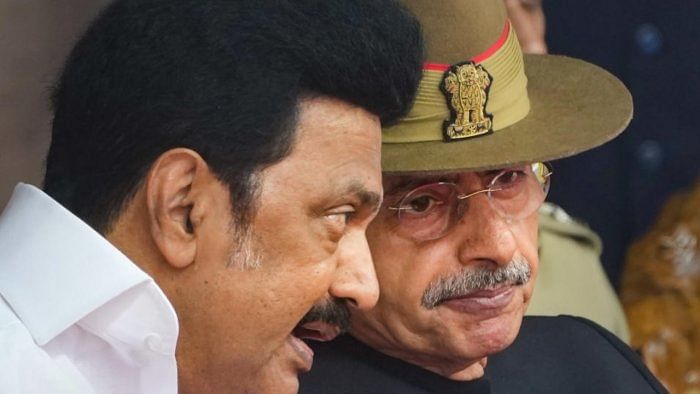
Lately, the conflicts between governors and the elected state governments have come under more frequent public scrutiny. The governors of Kerala, Delhi, and Tamil Nadu are at loggerheads with the democratically elected governments. But why are we seeing such frequent conflicts between the state executive and legislature over Bills, parliamentary resolutions, affirming oaths, or even addressing the House?
The practice of a governor not assenting to or ascribing to the position of the state legislature is neither new nor unique. It has arisen in the past as well. However, these matters were resolved in formal meetings held between the Council of Ministers and Governor to maintain secrecy pertaining to the advice of the Council and prevent a public display of disagreement.
The dissent of the governor is duly recognised by the Constitution under Article 200 of the Constitution, which states that the governor can send the bill again to the state legislature, or both houses of the state in the case of a bicameral legislature, for reconsideration. However, if the House or Houses pass the bill again, then the Governor is bound to assent to the bill, as he cannot defeat the prerogative of public will twice.
The other discretion of Governor is with regards to reference to President. This power is limited to recommending the bill for the perusal and assent of the President if the bill intends to impair the power of the High Court.
With regards to the governor’s duties and functions, the office of governor was made to assist with the functions of the state legislature, which was highlighted in CAD (Constituent Assembly Debates) as well when B R Ambedkar stated that “the governor under the Constitution has no functions which he can discharge by himself” and that he has only “certain duties to perform.”
The limited scope of duties that the governor is empowered to perform under the Constitution enables state legislatures to have superseding power over the governor to implement measures that they deem fit as part of their policies.
The landmark judgement in S R Bommai versus Union of India also shed light on the discretionary power of the governor when the court concluded in its observations that “the floor test in the assembly was not subject to the governor’s opinion.” The President’s discretion in appointing state authorities or ministers is subject to the power of the state legislature, which must have a majority in the House.
The Constitution clearly posits the governor as a public functionary who can safeguard the interests of the Union in the state while also supplementing the power of the state legislature to make local laws and frame policies under Lists II and III by assenting to bills passed by the House or House of the State.
The recent exchange between Tamil Nadu Governor R N Ravi and Chief Minister Stalin is differently seen by two factions of writers: one that supports the deviation of the Governor from printed speech to protect the sanctity of the term “Union of India,” and another that appreciates the stance of the CM in moving for a resolution against the oral speech of the Governor as a violation of the rules of conduct of
the House.
While taking positions and critiquing the conduct of functionaries is a good practice in academic writing, we must be concerned that such walkouts and disagreements that happen during the official proceedings of the House stay forever imprinted in the minds of the public and the media, even if the House abstains from recording such conduct.
The walkout precedes the debacle between Kerala’s governor, Arif Mohammed, and the LDF government, where the governor warned of removing a minister at his pleasure in relation to a remark made by him showing the abrupt expression of power flex by a dignitary of office who is placed in such a position by the executive head of state.
Such conflicts cloud the public’s trust because they don’t understand why people in positions of high public dignity get into fights with each other over every comment made by one against another.
This recurrence of similar conduct makes way for bad governance, which results in the governor assuming two types of roles in the governance of the state:
First, a passive role by withdrawing his assent on bills by the state legislature or referring bills to the President to inadvertently delay the process, as seen in Kerala.
Second, where the governor assumes an activist role by impeding government functions in daily governance and interfering in policy implementation, as in the case of NCT Delhi.
Both roles are detrimental to the cordial relationship between the executive and legislature in states, setting a bad precedent in the federal model where the executive assumes supremacy over parliament. A complete overhaul of power structures is not required to change the status of relations, but remembrance of one’s duties originally given under the Constitution is necessary to avoid such incidents in the future.
“Harmony of Power” means the positive relations or bonds that human beings form to achieve accomplishments. The Constitution entrusted Governor and State legislature with defined and separate duties to perform.
The governance of a state depends upon the legislature and executive, whereby both enable the other organ to perform its duties in the public interest. The libels and remarks are too small a reason to deviate from the sacred duty reposed in the dual organs of state. Hence, such conflicts should not take the form of decoding each one’s political motivations but are aligned towards making a good model of governance that can be followed in the future.
(The writer is a third-year student at National Law University, Jodhpur.)